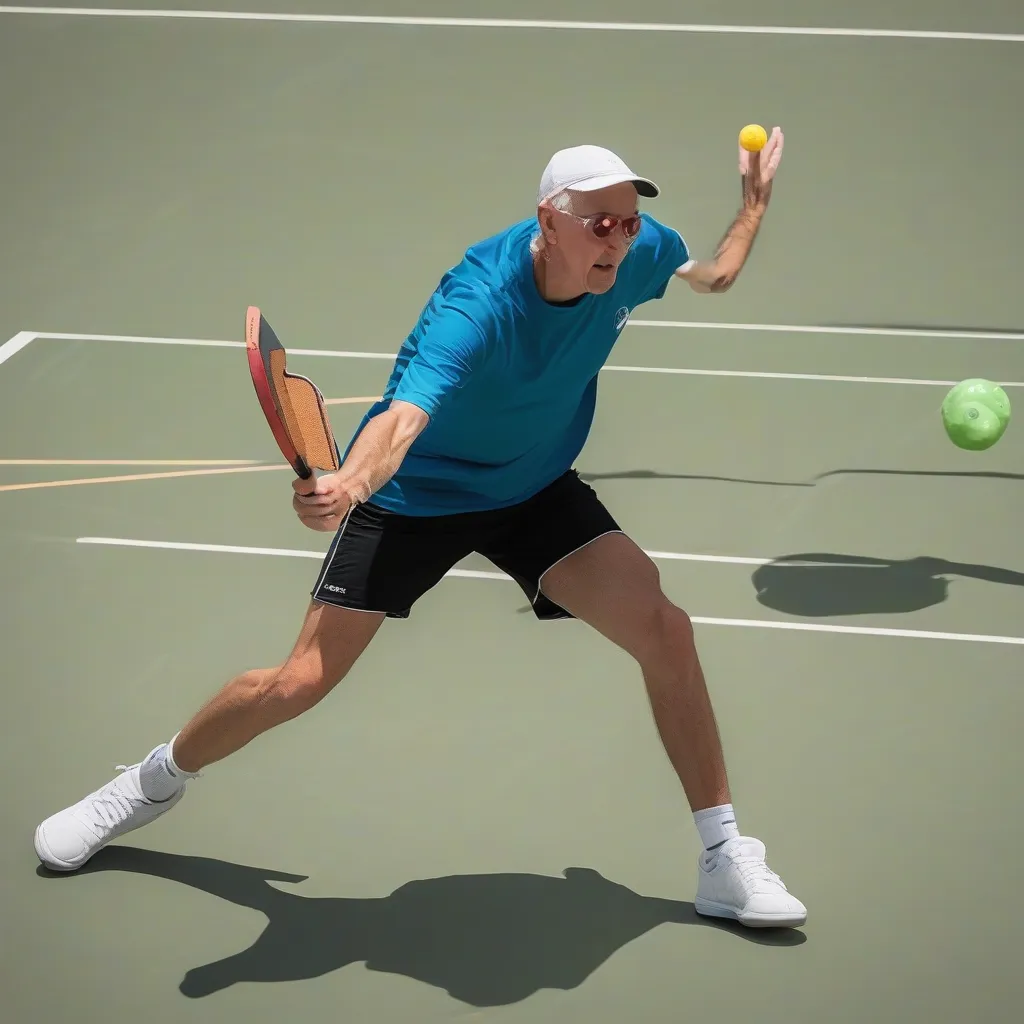Table of Contents
Introduction to Pickleball Serving Rules
Serving in pickleball is not just about starting the point; it’s about gaining an advantage and setting the tone for the rally. Understanding pickleball serving rules is crucial for both beginners and advanced players. This guide will cover the basics, advanced techniques, and common mistakes to help you improve your serving game.
Basic Pickleball Serving Rules
The basic serving rules in pickleball ensure fair play and consistency. Here are the key rules you need to know:
- Underhand Serve: The serve must be made with an underhand stroke so that the paddle contacts the ball below the waist level.
- Feet Position: At least one foot must be behind the baseline when the paddle makes contact with the ball. Neither foot may touch the baseline or court until after the ball is struck.
- Ball Placement: The serve must be hit diagonally, landing in the opponent’s service court. The ball must clear the non-volley zone (kitchen).
- Single Attempt: Only one serve attempt is allowed, except in the case of a let (the ball touches the net but lands in the correct service court).
- Service Sequence: In doubles, the first server continues to serve until a fault is made. Then the serve passes to the second server. After both players on the serving team have served, the serve passes to the opponents.
 Pickleball Serving Rules
Pickleball Serving Rules
Advanced Pickleball Serving Techniques
Once you’ve mastered the basic pickleball serving rules, you can explore advanced techniques to enhance your game. Here are some advanced serving strategies:
1. Topspin Serve
Adding topspin to your serve makes the ball dive quickly after clearing the net, making it harder for your opponent to return.
2. Slice Serve
A slice serve imparts side spin, causing the ball to curve and bounce unpredictably. This can throw off your opponent’s timing and positioning.
3. Lob Serve
A high, deep serve that pushes your opponent back to the baseline. This serve can disrupt their rhythm and set you up for an advantageous return.
4. Power Serve
A fast, hard serve that aims to catch your opponent off guard. This serve requires precise control to ensure it lands in the correct service court.
Common Serving Mistakes and How to Avoid Them
Even experienced players can make serving mistakes. Here are some common errors and tips to avoid them:
1. Foot Faults
Ensure at least one foot is behind the baseline and not touching the court when you make contact with the ball. Practice your serving stance to avoid foot faults.
2. Illegal Serve Motion
Remember that the serve must be underhand with the paddle contacting the ball below waist level. Practice your motion to ensure it meets this requirement.
3. Inconsistent Ball Toss
Maintain a consistent ball toss to ensure accuracy. Practice your toss separately to develop muscle memory.
4. Not Aiming for the Diagonal Court
Focus on placing the ball diagonally into the opponent’s service court. Marking targets during practice can help improve your accuracy.
Understanding Let Serves
A let serve occurs when the ball touches the net but still lands in the correct service court. Here are the key points about let serves:
- No Penalty: There is no penalty for a let serve, and the server is allowed to serve again.
- Unlimited Lets: There is no limit to the number of let serves a player can make. Each let allows the server another attempt.
Serving Strategies for Singles and Doubles
Different strategies can be employed depending on whether you’re playing singles or doubles:
Singles Serving Strategy
In singles, use a variety of serves to keep your opponent guessing. Mix up your serves with different spins, speeds, and placements to create opportunities for easy returns.
Doubles Serving Strategy
In doubles, communication with your partner is key. Plan your serves to complement your partner’s position and playstyle. Use serves that set up your partner for an aggressive return or help cover weaknesses.
Resources for Further Learning
To continue improving your serving skills, explore these valuable resources:
- For comprehensive guides and tips, visit the USA Pickleball Association (USAPA).
- Explore instructional videos and articles on Pickleball Central.
- For detailed tutorials and practice routines, check out Pickleball Portal.
- Learn from top players and coaches on PickleballMAX.
Conclusion
Mastering pickleball serving rules and techniques can significantly enhance your game. By understanding the basics, exploring advanced serves, and avoiding common mistakes, you can become a more effective and strategic player. Use the resources provided to further your knowledge and continuously refine your serving skills. With practice and dedication, you’ll be well-equipped to dominate the serve and gain an advantage in your matches.
Frequently Asked Questions
- What are the basic pickleball serving rules? The serve must be underhand, made with at least one foot behind the baseline, and hit diagonally into the opponent’s service court.
- Can I use different serving techniques in pickleball? Yes, you can use various serving techniques like topspin, slice, lob, and power serves to gain an advantage.
- What is a let serve in pickleball? A let serve occurs when the ball touches the net but lands in the correct service court. The server is allowed to serve again.
- How can I avoid common serving mistakes? Practice your serve motion, maintain a consistent ball toss, and focus on your foot position to avoid common mistakes.
- Where can I find more information on pickleball serving rules? Visit the USA Pickleball Association, Pickleball Central, Pickleball Portal, and PickleballMAX websites for comprehensive guides and tips.